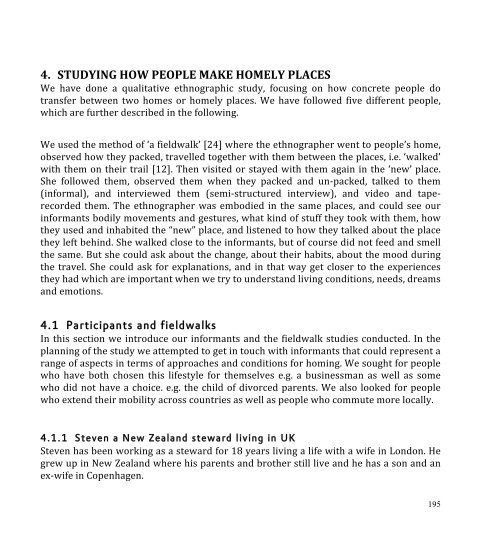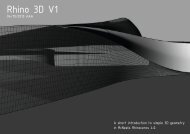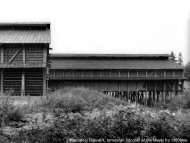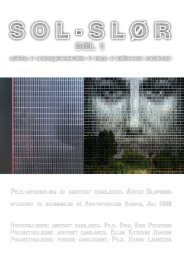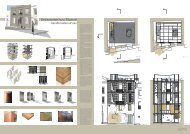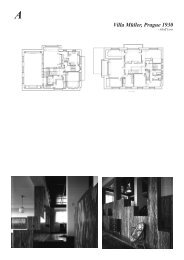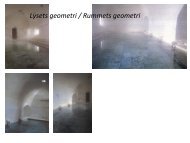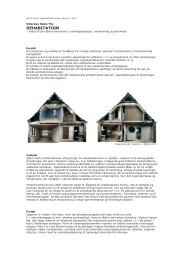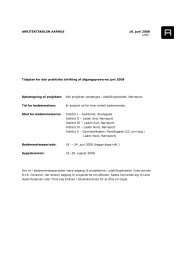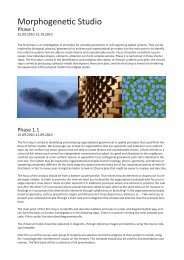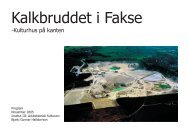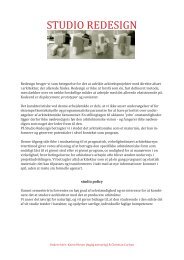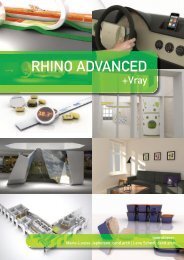-Tactics and Concepts for Highly Mobile People
-Tactics and Concepts for Highly Mobile People
-Tactics and Concepts for Highly Mobile People
Create successful ePaper yourself
Turn your PDF publications into a flip-book with our unique Google optimized e-Paper software.
4. STUDYING HOW PEOPLE MAKE HOMELY PLACES<br />
We have done a qualitative ethnographic study, focusing on how concrete people do<br />
transfer between two homes or homely places. We have followed five different people,<br />
which are further described in the following.<br />
We used the method of ‘a fieldwalk’ [24] where the ethnographer went to people’s home,<br />
observed how they packed, travelled together with them between the places, i.e. ‘walked’<br />
with them on their trail [12]. Then visited or stayed with them again in the ‘new’ place.<br />
She followed them, observed them when they packed <strong>and</strong> un-‐packed, talked to them<br />
(in<strong>for</strong>mal), <strong>and</strong> interviewed them (semi-‐structured interview), <strong>and</strong> video <strong>and</strong> tape-‐<br />
recorded them. The ethnographer was embodied in the same places, <strong>and</strong> could see our<br />
in<strong>for</strong>mants bodily movements <strong>and</strong> gestures, what kind of stuff they took with them, how<br />
they used <strong>and</strong> inhabited the “new” place, <strong>and</strong> listened to how they talked about the place<br />
they left behind. She walked close to the in<strong>for</strong>mants, but of course did not feed <strong>and</strong> smell<br />
the same. But she could ask about the change, about their habits, about the mood during<br />
the travel. She could ask <strong>for</strong> explanations, <strong>and</strong> in that way get closer to the experiences<br />
they had which are important when we try to underst<strong>and</strong> living conditions, needs, dreams<br />
<strong>and</strong> emotions.<br />
4.1 Participants <strong>and</strong> fieldwalks<br />
In this section we introduce our in<strong>for</strong>mants <strong>and</strong> the fieldwalk studies conducted. In the<br />
planning of the study we attempted to get in touch with in<strong>for</strong>mants that could represent a<br />
range of aspects in terms of approaches <strong>and</strong> conditions <strong>for</strong> homing. We sought <strong>for</strong> people<br />
who have both chosen this lifestyle <strong>for</strong> themselves e.g. a businessman as well as some<br />
who did not have a choice. e.g. the child of divorced parents. We also looked <strong>for</strong> people<br />
who extend their mobility across countries as well as people who commute more locally.<br />
4.1.1 Steven a New Zeal<strong>and</strong> steward living in UK<br />
Steven has been working as a steward <strong>for</strong> 18 years living a life with a wife in London. He<br />
grew up in New Zeal<strong>and</strong> where his parents <strong>and</strong> brother still live <strong>and</strong> he has a son <strong>and</strong> an<br />
ex-‐wife in Copenhagen.<br />
195


